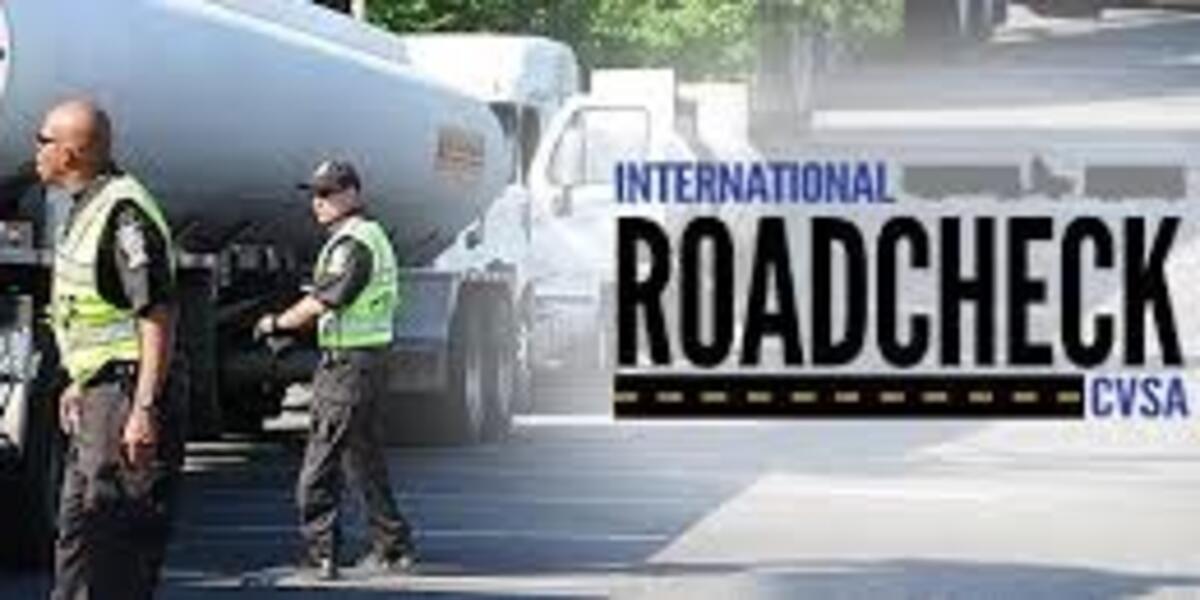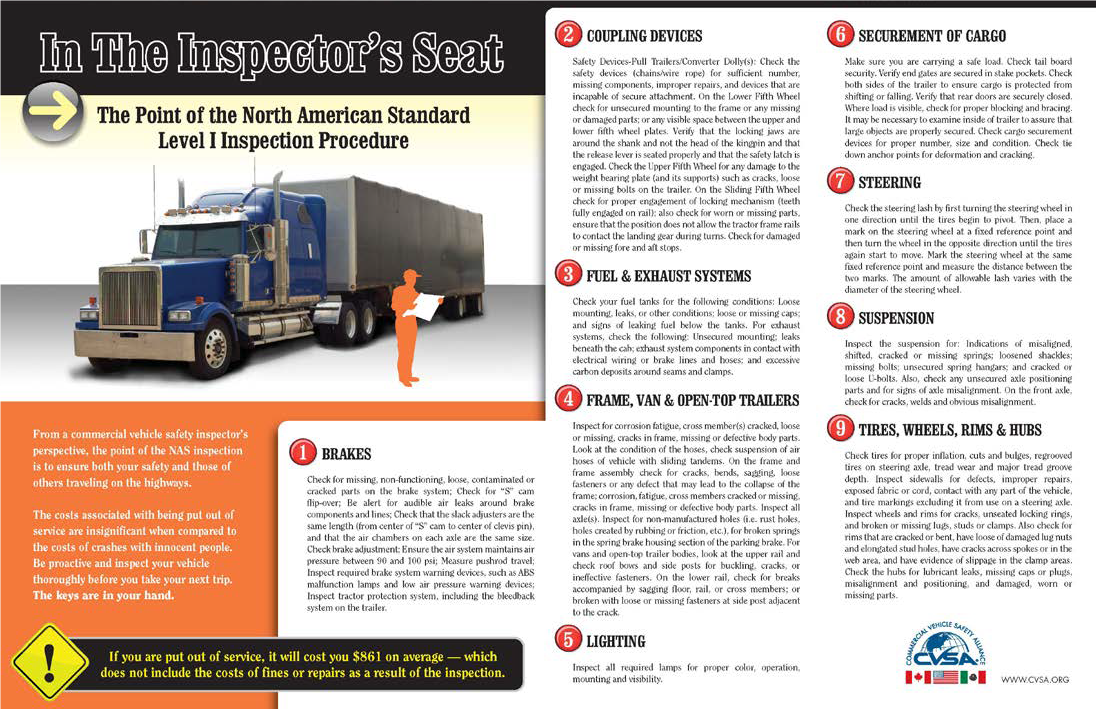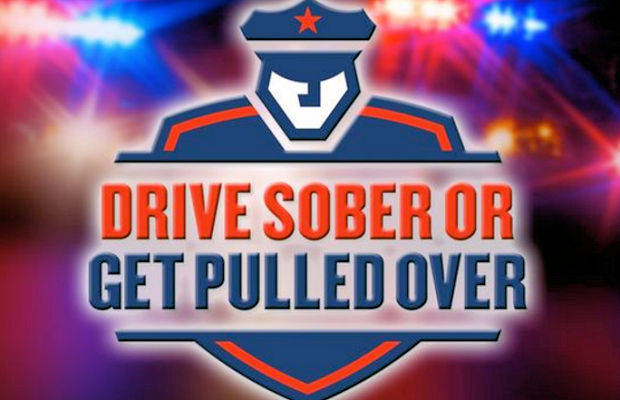The Commercial Vehicle Safety Alliance (CVSA) rescheduled its International Roadcheck for September 9th-11th.
The annual event was postponed in March until further notice due to the COVID-19 pandemic. It was originally slated for early May.
The three-day enforcement campaign will result in a high volume of roadside inspections throughout North America. Law enforcement will perform driver and commercial motor vehicle inspections at weigh or inspection sites and fixed locations and through roving mobile patrols. Officers will check for compliance with motor carrier safety regulations, and those vehicles or drivers found with a critical inspection violation will be placed out of service.
Each year, CVSA’s event emphasizes a specific area of safety compliance. This year’ focus is on the driver requirements component of a roadside inspection.
Areas include:
- Driver’s age
- Driver’s licensing requirements
- Driver physical qualifications
- Sickness or fatigue
- Alcohol, drugs, and other substances
- Driver’s record of duty status (U.S., Canada, or Mexico)
For more information on International Roadcheck, visit www.roadcheck.org.
Idealease Pre/Post Trip Inspection Videos for Driver Training
Train drivers how to complete good quality pre/post-trip inspections to reduce possibility of violations.
Use Idealease Pre-Post Trip training videos below.
English versions:
Spanish versions:
The first step towards a safe trip begins in the driveway.
- Do a "walk around" before leaving: Check your vehicle's tires, wipers and fluids. Have your radiator and cooling system serviced.
- Plan ahead: Before you get on a highway, know your exit by name and number, and watch the signs for the exit as you near it. Drivers making unexpected lane changes to exit often cause accidents.
- Get a map or program your GPS: Surprisingly, few motorists use maps, even when driving through unfamiliar areas. Knowing the road is essential for safe driving -- it allows you to anticipate the road ahead and avoid a panicky search for directions.
- Leave early and avoid risks: Leave early so you won't be anxious about arriving late and to accommodate delays. Know your limitations: don't drive when tired, upset, or physically ill. Never try to gain a few seconds by attempting a risky maneuver.
- Be aware of trucks’ blindspots: When sharing the road with large trucks, be aware of their blind spots. If you can't see the truck driver in his or her mirrors, then the truck driver can't see you.
- Expect the unexpected: Look 1/4 mile ahead for a safe path. Leave yourself an out.
- Make sure your phone is connected to the Bluetooth of your vehicle and you are talking hands free. Limit cell phone use to a minimum and pull off to a designated parking area to use your cell phone if the call is going to be prolonged. Make sure you are NOT on your phone in work zones.
- Signal your intentions: To change lanes, signal ahead of time so other drivers can respond. If a truck is signaling to change lanes, allow it space to do so. Often, it is trying to avoid another vehicle.
- Do not cut in front of large trucks: Remember that trucks are heavier and take longer to make a complete stop, so avoid cutting quickly in front of them.
- Yield: On entrance ramps, remember highway traffic has the right of way; maintain proper speed, use smooth merging techniques, and don't slow down in front of a truck.
- Never stop on the highway: The most dangerous speed on a highway is zero. Stopped vehicles, even on the shoulder, create a severe hazard for themselves and others. If you are stopped for emergency purposes, understand that big trucks cannot always stop to assist you, but most will use their radios to contact the police or highway patrol if they see you are in trouble.
- Watch your gas gauge: To save fuel, take direct routes, minimize side trips, and keep a steady speed. Further, a well-tuned engine, properly inflated tires and reduced speed will result in noticeable fuel savings. Have at least a quarter of a tank of gas before you get on a highway. Traffic tie-ups can use a lot of fuel -- and may leave you stranded.
- Construction zone: Stay alert in work zones. Traffic may move more slowly, and lanes may be temporarily closed. Obey informational signs located within the work zone.
The America's Road Team would like to remind the motoring public that from driveway to highway, safety requires patience and dedication.
Six Most Common CSA Violations
The truck
Violation: Lighting
28% of all roadside vehicle violations last year, out of 2.4 million inspections, dealt with lights or reflective materials. Light violations are a severity point assessment of 6 CSA points and a conspicuity of reflective tape violations are 3 CSA points.
Prevention: Pre and Post trip inspections and reporting of lighting defects on the daily vehicle inspection report. Use Idealease’s Pre-Post Trip training videos:
Violation: Brakes
25% of vehicle violations are for brakes, with over 1 million brake violations last year, each with four CSA points.
Prevention: Training is key. Make sure drivers know what to look for and when to get assistance with their brakes. The only way to find a brake adjustment problem is to carefully measure the stroke, and adjusting a brake that has an automatic adjuster won’t fix the problem (and may make it worse).
Violation: Tires
11% of vehicle violations are for tires (half for tread depth), with a CSA severity of eight points. Steer tires must have 4/32 inch of tread depth; other tires must have 2/32 inch.
Prevention: Pre and Post Trip inspections that identify tires that are getting close to regulation requirements being reported on the daily vehicle inspection report. Drivers need to know how and when to check inflation (with a gauge!) and when it’s time for a replacement.
The Driver
Violation: Logs
“Form & Manner” and “Log Not Current” violations make up 25% of all driver violations at the roadside, far and above any other violation. A form/manner violation carries just one CSA point, but a log that isn’t current is worth five.
Prevention: Review hours of service regulations with all drivers upon orientation and throughout the year during driver meetings. Monitor hours of service documentation for violations.
Implement a progressive disciplinary policy for violators with termination as the ultimate action taken. Consider implementing electronic logging devices.
Violation: Medical issues
12% of driver violations are related to medical issues, often a failure to have a valid medical certificate. These carry a low CSA point value of one or two, although driving while physically ill is a 10-point violation.
Prevention: Track the expiration of your drivers’ medical cards and make sure they get updated, placed in drivers’ files, carried in the vehicle, and turned in to the state licensing agency. Make sure drivers know exactly what is required of them and have consequences in place for those who fail to comply. Some of these violations may go away once we have the National Registry of Medical Examiners, and once interstate CDL drivers no longer must carry their medical cards (in Feb. 2015).
Violation: English ability
This violation has been surging in recent years, currently at 9% of all driver violations and carrying four CSA points. Compliance is complicated because there is no yes/no standard. Key for a roadside inspection is being able to fill out paperwork, speak with officers and answer their questions, all in English.
Prevention: Your hiring practices should filter out drivers who simply cannot meet the standard. Use training and practice to help drivers know how to respond to typical questions about their logs, their trips and cargo, their insurance, registration, license, and their vehicle.
Driver Sober or Get Pulled Over Enforcement
The 2020 national enforcement mobilization “Drive Sober or Get Pulled Over” goes into effect across the country from Aug. 21 to Sept. 7, 2020. One of the deadliest and most often committed – yet preventable – of crimes (impaired driving), has become a serious safety epidemic in our country.
With the end of summer comes Labor Day weekend, which in years past has signaled one last trip to finish out the summer. As it turns out, this year does not look much different, despite the COVID-19 pandemic — except for the places Americans plan to travel. Given that many locations around the country have instituted a 14-day quarantine for new arrivals and some countries have banned Americans altogether, travelers are essentially opting for the locations that will have them. A study from from Tripit comparing Labor Day air line bookings this year vs. last year shows that traditionally popular destinations have been replaced with warm-weather destinations that also happen to be pandemic hot spots (Florida and Arizona, for example).
Unfortunately, the holiday weekend also means an increase in road traffic, with many flocking to the beaches and to visit family and friends for the long weekend.
Increased traffic means an increased likelihood of vehicle crashes, and the festive nature of the weekend, unfortunately, lends itself to instances of drunk driving. To keep people safe on the streets, the U.S. Department of Transportation’s National Highway Traffic Safety Administration (NHTSA) wants to make sure this busy travel period is a safe one, which is why we’re partnering with law enforcement nationwide for the Drive Sober or Get Pulled Over enforcement campaign from August 21 through September 7, 2020, to help put a stop to alcohol-impaired driving.
https://www.cvsa.org/wp-content/uploads/International-Roadcheck-Vehicle-Inspection-Cheatsheet.pdf









